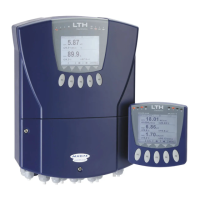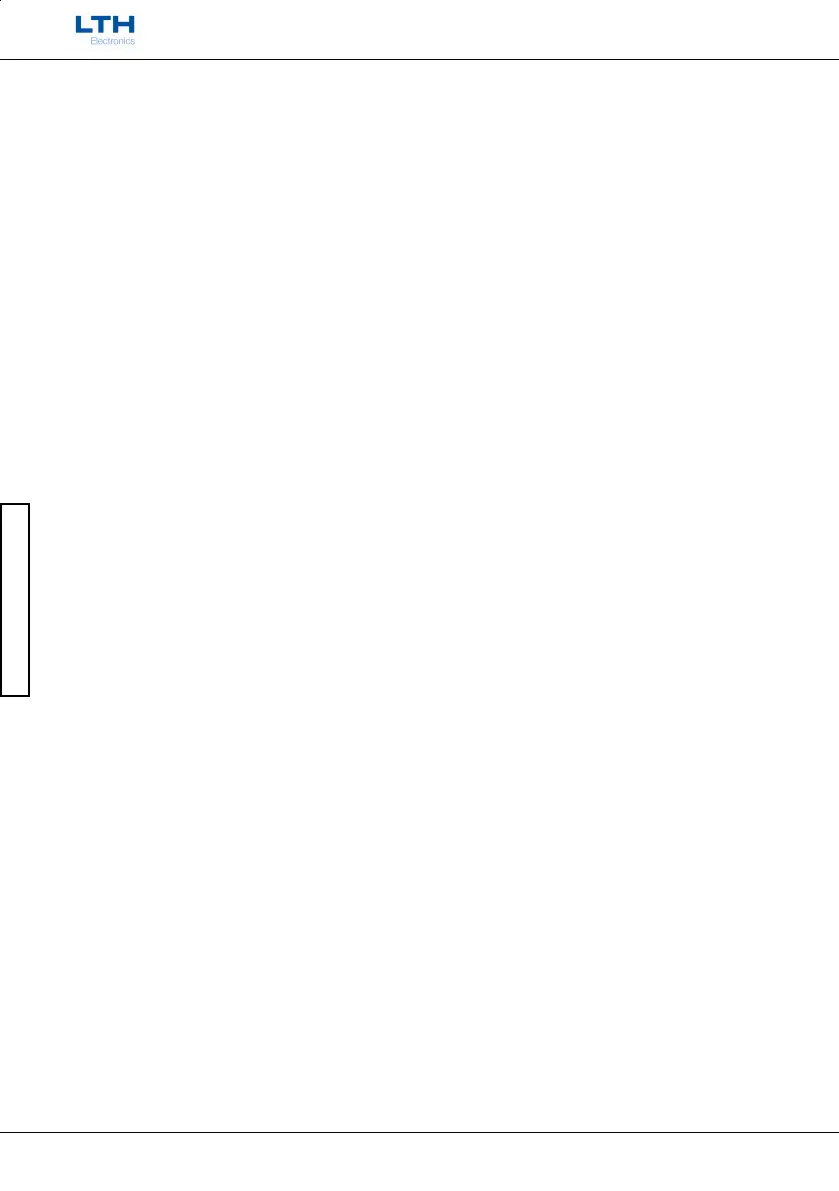Channel Calibration
- 24 -
MXD70 Dissolved Oxygen
Setup and Operating Guide
Channel Calibration
Calibration
Calibration Procedures
Normal good practices should be observed when calibrating DO systems. When the instrument is first
connected to the oxygen sensor, i.e. when the unit is first installed, or whenever the oxygen sensor is
changed or the membrane replaced, the user should perform a zero check and span calibration of the
system using the following procedure. If necessary the user can use a span calibration other than
100% by simply setting the span calibration level in the “Span Calibration Point” item in the input
channel’s Calibration menu.
Notes.
As an aid to stable air calibration, a partially covered bucket can be used to shield the sensor from
the temperature variations which arise from exposure to the wind and sunlight.
It is recommended that because the OE15 oxygen cartridge has a finite life, a spare cartridge
should be stocked where a significant down time is not acceptable to the application.
The OE15 sensor requires a minimum fluid flow of 0.5ms
-1
to refresh the depletion layer which
forms around the sensor membrane. This applies to both air and solution readings.
Approximate sensor current is 700uA = 100% Sat with Galvanic sensor and 60nA = 100% Sat with
Polargraphic sensor.
If using a manually compensated sensor an accurate calibration solution temperature is required
to compensate for the effect of temperature on the sensor’s membrane. The manual calibration
temperature can be entered in to the “Calibration Manual Temperature Input” menu item in the
input channel’s Calibration menu.
In addition if manual pressure compensation is also being used it is important to have the sensor
pressure level correctly entered in the “Calibration Manual Pressure Input” menu item, especially
when the sensor is measuring in a system where pressure can vary over a wide range.
When a Polargraphic is connected to the instrument and the system is first turned on, a
polarization voltage is applied across the sensor. Initially the sensor current will be very high as
oxygen is depleted from the internal electrolyte. After a few hours it should have fallen off to a
steady state. So it is recommended a Polargraphic sensor is allowed to fully stabilize before
calibration is started. Alternatively when not in use the sensor is connected either to a polarizing
unit or a powered instrument when not in use.
Zero Check in a de-oxygenated solution
Prepare a fresh solution of approximately 2% wt/vol. of sodium sulphite in de-mineralised water.
Wash off any process chemicals or water from the sensor, which may contaminate the solution.
Use de-mineralised water or follow the manufacturers cleaning instruction as necessary.
It is recommended that % saturation is used as the calibration units.
Allow the output to settle in air at (or close to) 100% saturation.
Select the” Sensor Zero Calibration” item in the input channel’s calibration menu and place the
sensor in the sodium sulphite solution and observe the current reading. The reading should drop
below 10% of the air saturated reading within 35 seconds.
If this time is exceeded, cycle the sensor between the free air and the solution to improve the
speed of the response. If cycling it 3 or 4 times does not improve the response significantly, store
the sensor overnight in the solution and then re-test it with a fresh solution the following day. If
it still does not respond within the specified time the cartridge’s membrane should be checked
and replaced if necessary, otherwise the electrolyte will have to be replaced (this must be done at
the factory for OE15 sensors).

